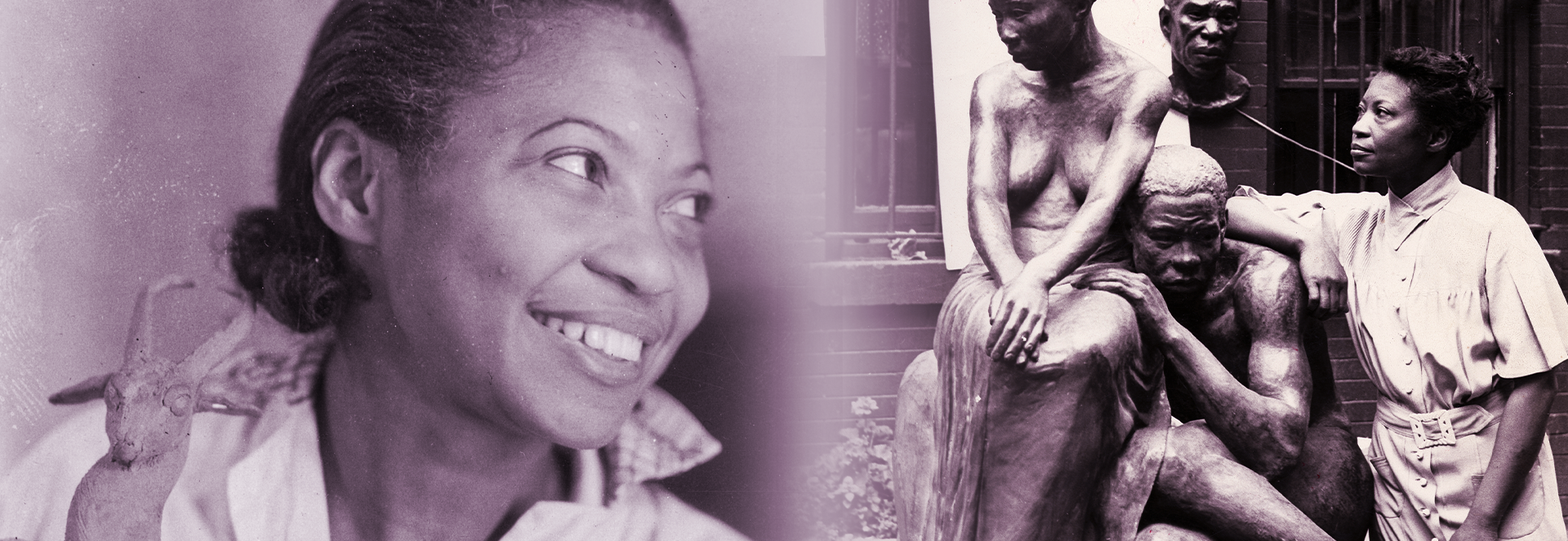Augusta Savage, sculptor, art teacher and advocate for Black artists, was born in Green Cove Springs, Florida on February 29, 1892. Her earliest memories were of “the rain falling on the red clay in Florida” and how it inspired her want to want to sculpt. Her father, a Methodist minister, disapproved. “My father licked me four or five times a week,” she said, and he “almost whipped all the art out of me.”
In 1921, she moved to New York City and attended Cooper Union. She was selected for admission ahead of more than one hundred forty male applicants. Two years later, she earned a scholarship to study art in France. Once the school discovered that Savage was black, they were afraid it would cause “complications” for her there, and they rescinded her scholarship. She wrote letters to newspapers in the United States and Europe to shed light on this racial injustice.
Although she had to work in steam laundries to support herself, Savage became a leading artist of the Harlem Renaissance. She received commissions to sculpt busts of W. E. B. Du Bois, Marcus Garvey and NAACP leader William Pickens, Sr. and her work earned praise for its realism. Her 1929 sculpture Gamin earned Savage another scholarship and the chance to finally study in Paris.
When she returned to the United States, she opened the Savage Studio of Arts and Crafts in Harlem where she trained many other artists of the Harlem Renaissance. In 1934, Savage became the first Black member of the National Association of Women Painters and Sculptors. In 1937, she was appointed the first director of the Harlem Art Center. It was forced to close in 1939, but that year Savage founded the Salon of Contemporary Negro Art. It was the first gallery in the United States to exclusively showcase Black artists. “We do not ask any special favors as artists because of our race,” Savage said at the Salon’s opening reception. “We only want to present to you our works and ask you to judge them on their merits.”
In 1939, Savage received a commission from the New York World’s Fair. She produced her most famous work: “Life Every Voice and Sing,” based on the song of the same name. The sculpture became known as “The Harp” and was very popular, selling many postcards and small replica souvenirs. Savage could not afford to sculpt in bronze so “The Harp,” like so many of her sculptures, was only plaster. After the World’s Fair, it was destroyed during clean up.
In the 1940s, she relocated to Saugerties, NY to live a quieter life, where she continued to created art and taught art to children at local summer camps. “I have created nothing really beautiful, really lasting, but if I can inspire one of these youngsters to develop talent I know they possess,” Savage said about what her legacy would be, then “my monument will be in their work.” Augusta Savage died in 1962.





